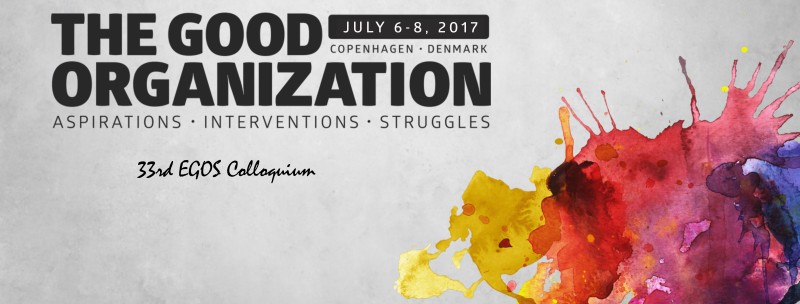Sub-theme 40: The Moral of the Story: Aesthetics and Ethics in Organizations
Call for Papers
The particular relationship between narrative and wisdom provides a first illustration of the range of possible connections
between aesthetics and ethics in organizations. Organizational scholars have recently focused on the concept of practical
wisdom as a form of human understanding that is particularly relevant in times of crisis and uncertainty. Drawing on philosophy,
psychology, and even theology and spirituality, organizational theorists have presented a variety of conference streams, books,
and articles establishing wisdom as relevant to leadership, management, decision making and many other facets of organizational
life.
The psychologists who established part of the theoretical basis for the contemporary study of practical
wisdom in organizations began by focusing on the “folk conceptions of wisdom” that appear in narratives. It seems that most
cultures possess narratives that inform and teach about how to make sense of the world and how to respond to challenges with
wise thoughts and deeds. These rich and diverse narrative sources include various forms ranging from adages, idioms, parables
and poems to fables, myths, koans and other so called implicit theories of wisdom. They provide a foundation for character
or group development, educational formation as well as decision-making about what should be done in ambiguous and uncertain
circumstances. Indeed, the protagonists of such folktales offer exemplary illustrations of virtue and vice and of unintended
consequences and decision-making as well as moral and practical implications that follow from each. Accordingly, these stories
portray what it means to be a good person and do the right thing across many cultures and eras in human history and organizations.
In turn, narrative and storytelling in organizations have been extensively explored by scholars. And in contemporary
organizational life, the relatively narrow genre of the ‘folk tale’ can be expanded to include everything from CEO hagiographies,
blog or pod-casts via intranet and usages of social media to visual brand strategies and employee recognition programs. These
various forms of narrative appear to have significant implications in the context of transformational change, for the construction
of gender, and for collaboration and creation among other phenomena. Of course, these implications are not uniformly positive
– critical scholars have also emphasized the use and abuse of storytelling in shaping different tales of the future. Narratives
would also appear to have a dark side that relates not to wisdom but instead to foolishness and stupidity in organizations.
Yet, the specific relationship between narrative and wisdom provides a gateway to a much broader discussion
of the relationship between aesthetics and ethics. How does art enable us to appreciate the singularity of human experience
and the alterity of others in organizations? How might art also work as a form of social control by establishing what is socially
appropriate and what will be judged inappropriate, or function to preserve social groups by reinforcing the validity of moral
values and norms? How might art allow people in organizations to engage with each other in ways that extend well beyond the
issuing of instructions and the stipulation of ends? What difference, if any, does the medium make?
Our intention
in convening this sub-theme is to build on this existing interest in narratives and wisdom and expand it broadly to include
other conceptualizations of ethics and normativity as well as creative forms of artistic expression and aesthetic experiences
or events. The scope of potential sub-topics includes, but is not limited to: affect, intuition, and emotion; implicit knowledge;
authenticity, integrity and virtue; psycho-social development and learning in organizations. Furthermore, possible themes
include: negotiations, decision-making and judgment; creativity, and artful practices; rhetoric, persuasion and communication;
knowledge-, risk- and crisis management; stakeholder approaches to management; and sustainability.
We are
particularly interested in various forms of artistic and aesthetic expressions and practices that deal with intense socio-material
transformations currently underway. These include, for example, geo-political conflicts, economic and ecological crises, the
accelerated flows of global capital, and the power dynamics and cultural diversity. Exemplary illustrations of coping, creative
inventions, and innovative or sustainable solutions to problems are especially welcomed.
We also invite participants
to consider practical implications of the connection between aesthetics and ethics for management education. In this regard,
we call for contributions that integrate narrative and other forms of contemporary visual and performing art into education.
If certain forms of artistic expression can help us become more wise, then we should experience them and discuss how they
might be integrated across the fields of research, teaching and academic service. In this sense, the stream format will provide
a kind of critical and dialogical ‘story-place’, allowing participants to explore avenues for new theory development as well
as practical engagement in new and wiser forms of organization. We anticipate developing possibilities for the publication
of the stream contributions, including journal special issues or an edited book volume.


